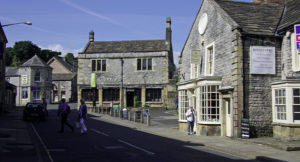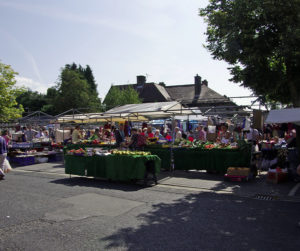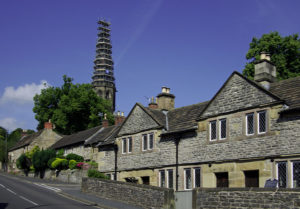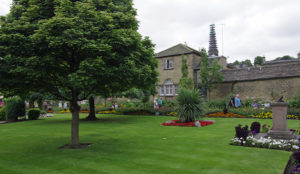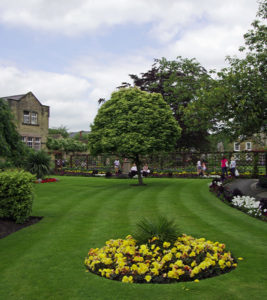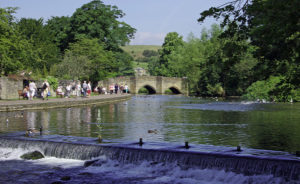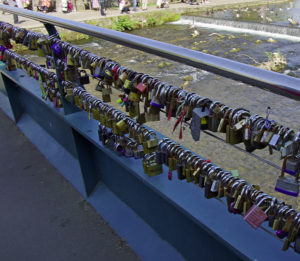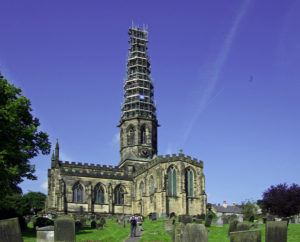Bakewell is an attractive small market town of gritstone buildings set on the River Wye. It is the main service town for the area and is also popular with visitors, especially on Mondays when the weekly market with over one hundred and fifty brightly coloured stalls selling everything under the sun, line Granby and Market Streets. It still has a thriving livestock market on the edge of the town. There is a monthly farmers market as well as the yearly food festival. The blight of the chain stores has yet to hit Bakewell and it has many small family owned shops. It is a shopaholics paradise.
Mention Bakewell to anyone and they will immediately link the name with that of the tart, but this is very different to the original (and genuine) Bakewell pudding. This was the result of a misunderstanding between the Mrs Graves, landlady of the Rutland Arms and her kitchen assistant. A nobleman had asked for a jam tart but the kitchen assistant made a mistake with the recipe and instead of stirring the egg and almond mix into the pastry base, piled it on top of the jam. The Bakewell pudding was born and is still made in Bakewell today and the Old Original Bakewell Pudding Shop is a popular stop for the tourist. Be warned, the pudding is much richer than the more usual sponge topped Bakewell tart.
When tired of shopping, Bath Gardens in the centre of the town, overlooking Rutland Square, is a lovely place to drop out and relax. The name reflects the tepid mineral springs found in the town and the unsuccessful attempt in the early C19th to promote Bakewell as a Spa town.
There is a lovely walk along the river with its ducks. The C13th bridge, one of the oldest in the country is still in use today although it was widened in the C19th. Further downstream near Holme Hall is a C17th packhorse bridge, used by people coming from Monyash to avoid paying tolls as they entered the town. Weir footbridge across the river is decorated with love locks and there is even a shop in the town selling them. There is a “town trail”:http://mediafiles.thedms.co.uk/Publication/DS/cms/pdf/Trail_34.pdf too.
The C13th “All Saints’ Church”:http://wasleys.org.uk/eleanor/churches/england/east_midlands/derbyshire/bakewell/index.html with its tall spire stands proud above the town. This has a long history since the C7th and has a couple of early Christian cross shafts in the graveyard as well as Norse/Anglian carved stones in the porch and back of the church. Inside the church is the burial chapel of the Vernon and Manners families of nearby “Haddon Hall”:http://wasleys.org.uk/eleanor/stately_homes_castles/england/eastmidlands/haddon/index.html with their splendid tombs.
Just a short walk from the church is “Old House Museum.”:http://www.oldhousemuseum.org.uk/ The lovely stone house dates from the early C16th and was built for the tithe collector and was lter extended. In the late C18th it was converted into five cottages for mill workers. By 1950 the cottages were condemned as unfit for human habitation and were in danger of being pulled down. They were saved by the local history society as a folk museum. Displays cover the history of the house and its occupants, complete with Tudor toilet and Victorian privy. There is a mill worker’s kitchen as well as displays of textiles and costumes. There are doll’s houses and information about the famous pudding.
There is lots of information available from the Visitor Centre above the Old MArket Hall on Bridge Street. Bakewell is a thriving place with a lot of activities from carnivals to a book fair. A list of 2017 activities is “here.”:http://www.whatsonbakewell.co.uk/events
I was on a coach tour and could have done with a lot longer to explore and enjoy the town. It is definitely worth visiting and is in a lovely part of the Peak District.
